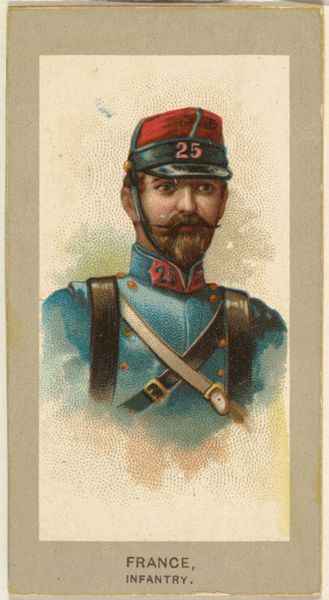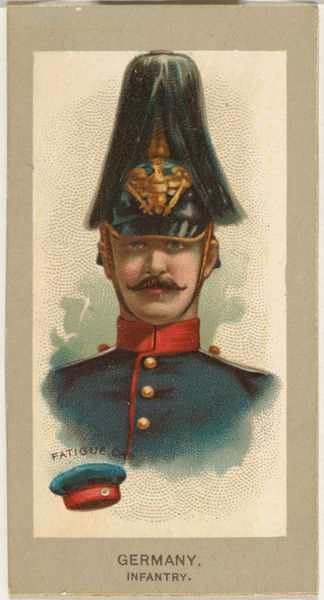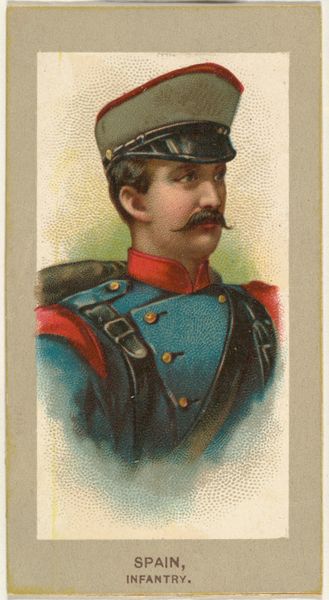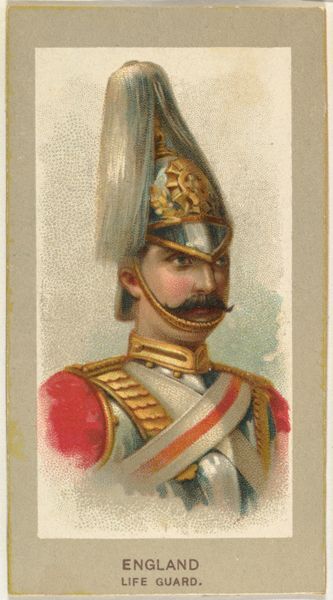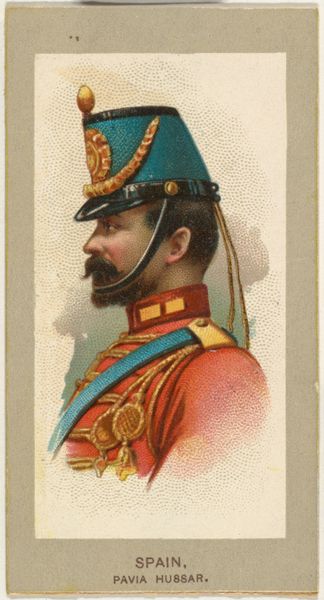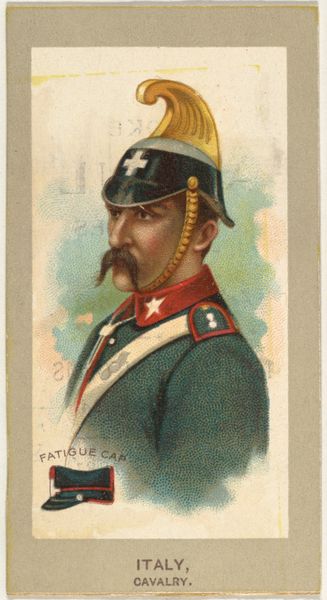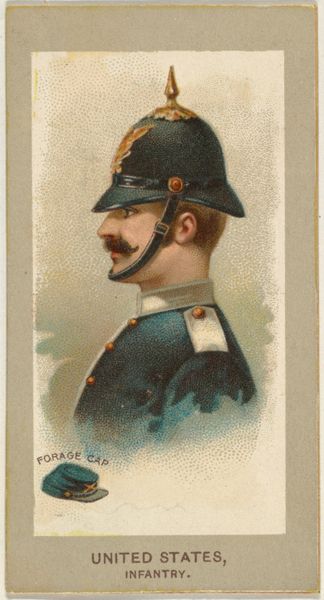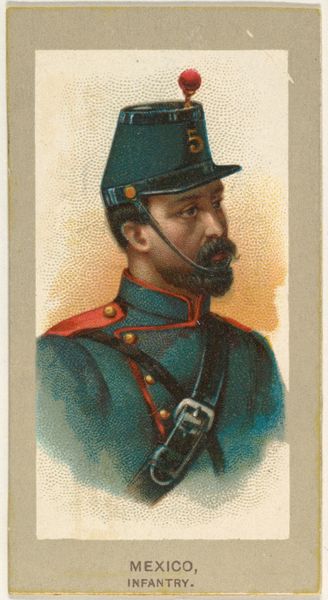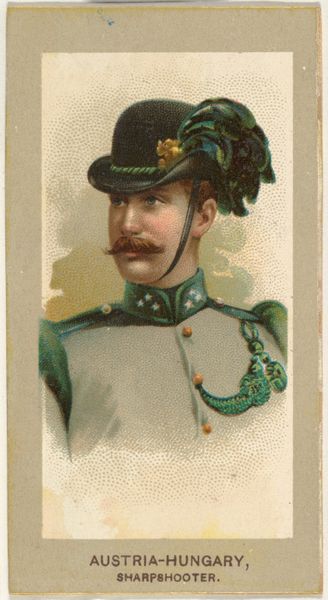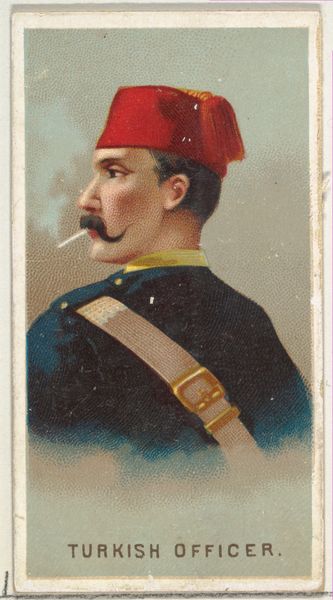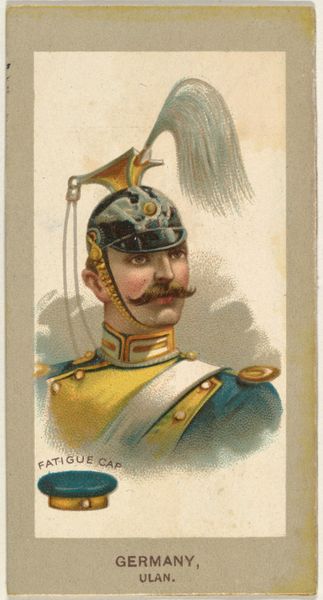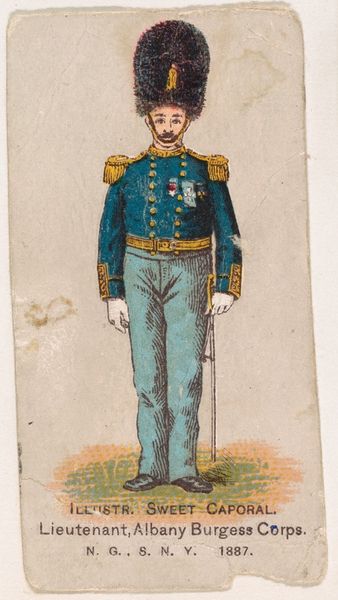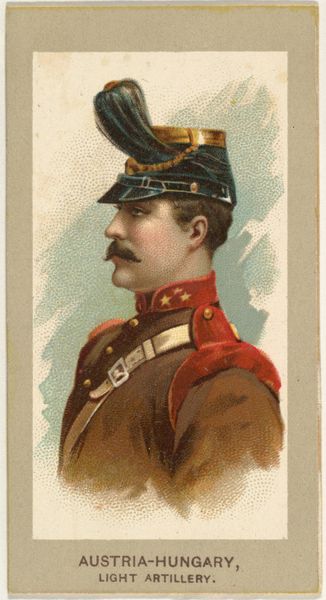
Fatigue Cap, Artillery, Italy, from the Military Uniforms series (T182) issued by Abdul Cigarettes 1881
0:00
0:00
drawing, coloured-pencil, print
#
portrait
#
drawing
#
coloured-pencil
# print
#
caricature
#
caricature
#
coloured pencil
#
19th century
#
men
#
genre-painting
#
history-painting
#
academic-art
Dimensions: Sheet: 3 3/16 × 1 3/4 in. (8.1 × 4.4 cm)
Copyright: Public Domain
Curator: Check out this artwork; it is entitled "Fatigue Cap, Artillery, Italy" from the "Military Uniforms series (T182)", created by Abdul Cigarettes in 1881. Editor: Ah, that’s charming, a bit rigid, almost cartoonish... there's a sweetness despite the stern military get-up. It feels like a vintage advertisement. Curator: Indeed. This piece is a chromolithograph print and was issued as part of a promotional series included in cigarette packs. It depicts an Italian artilleryman and served to familiarize consumers with the world of military fashion. Editor: Cigarette cards... imagine trading cards depicting soldiers. This particular artilleryman seems burdened by the weight of his marvelous mustache. The rendering is neat; every element is given attention. Curator: Well, in that era, meticulous detail reflected the artistic standards and cultural values. The artist uses color and design to present this soldier as simultaneously dignified and approachable. Military uniforms, and nationalistic images, are very specific ways of triggering cultural continuity. Editor: Right. Even now, that star and cross design holds meaning, invoking associations of Italian nationalism in art. The "Fatigue Cap" vignette in the corner adds a self-referential touch, grounding it in advertisement culture. It's an exercise in memory; not just visual, but tactile – imagining the card in hand. Curator: Exactly. The uniform itself becomes a signifier; representing codes, identity and cultural history of Italy at the end of the 19th century. What do you make of it? Editor: In the present? A beautiful vestige, a relic imbued with the quiet tension between duty and mortality. One of these cigarette cards must have seemed such a small thing. Now it holds all these traces. Curator: Yes. Every stroke immortalizes its context, offering us this quiet dialogue with a distant world. Editor: Definitely. Makes you wonder who held onto this and why, it's a lovely artifact of another time, even just as something discovered in an attic.
Comments
No comments
Be the first to comment and join the conversation on the ultimate creative platform.
